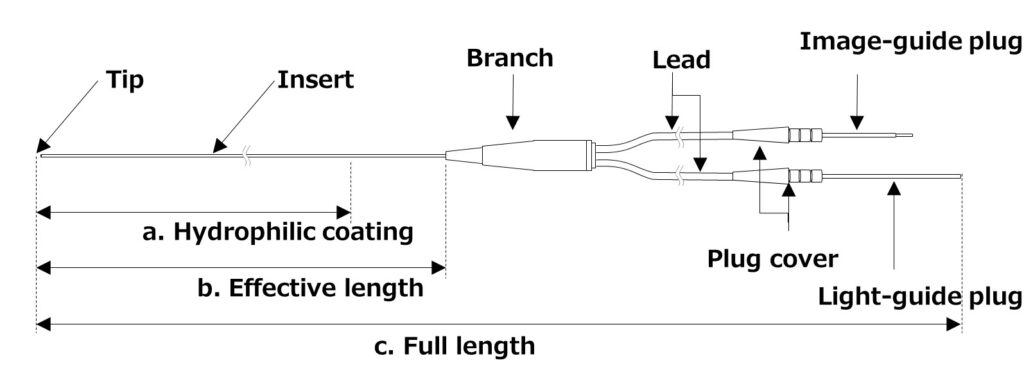News
Disposable Ultrafine Endoscope
On September 14, 2022, we disclosed “Notification of the filing of a new medical device registration for a disposable ultrafine endoscope” as our IR information.
Peritoneal dialysis (*1) is an ideal treatment because it enables home care, has medical and economic advantages, and is less burdensome for patients than hemodialysis (3 times a week, 4 hours each time). However, it is difficult to continue for a long period of time because the peritoneal membrane deteriorates over time and can cause serious complications, forcing discontinuation of the treatment after about five years in Japan. Currently, the only way to check the condition of the peritoneum is through laparotomy or observation using an abdominoscope.
With a program called “Biodesign”, that materializes novel medical innovation by developing solutions starting from the needs of the medical field and optimizing the solutions by imagining the final product at the medical field, Renascience has worked with physicians/scientists at the department of nephrology of several universities and medical institutions, such as Tohoku University, St. Luke’s International University, Tokai University, Juntendo University, Jikei University School of Medicine, to develop a novel, disposable ultrafine endoscope.
The research results were presented in an invited lecture at the 65th Annual Meeting of the Japanese Society for Dialysis Therapy in November 2020 and published in a peer-reviewed scientific journal (Nakayama M, Hamada C, Yokoyama K, Tanno Y, Matsuo N, Nakata J, Ishibashi Y, Okuzawa A, Sakamoto K, Nara T, Kakuta T, Nangaku M, Yokoo T, Suzuki Y, Miyata T. A disposable, ultra-fine endoscope for non-invasive, close examination of the intraluminal surface of the Scientific Reports. 2020; 10: 17565).
Peritoneal dialysis patients have a tube constantly inserted into the peritoneum to inject dialysis fluid. This ultrafine endoscope is a disposable product with an outer diameter of approximately 1 mm that can be inserted through this thin tube to noninvasively observe the intraperitoneal cavity. It has been developed based on a totally different concept from conventional gastrointestinal endoscopes, and we expect its various clinical application through gastrostomy tubes, urethral balloons, tracheal tubes, and large needles.

In May 2020, we executed a License Agreement for a joint development and commercialization with a leading pharmaceutical and medical device company in peritoneal dialysis medicine regarding the application of this product to peritoneal dialysis. This disposable ultrafine endoscope consists of a fiberscope (*2) as the main frame and a guide catheter (*3) as an accessory, and the fiberscope is now filed for approval. This disposable ultrafine endoscope is a medical device that allows non-invasive observation of the intra-abdominal conditions of peritoneal dialysis patients and diagnosis of peritoneal membrane deterioration over time and serious complications. It can improve QOL of the patients and contribute long-term continuation of peritoneal dialysis.
(*1) Peritoneal dialysis: This method uses the peritoneum (a thin membrane covering the stomach, intestines, and other organs) of the patient’s own body as the dialysis apparatus. When the abdomen is filled with dialysis fluid through a tube (catheter), waste products in the blood, unwanted urinary toxins and electrolytes move into the dialysis fluid (diffusion). In addition, the difference in osmotic pressure between the dialysate and blood (the osmotic pressure of dialysate is higher than that of blood because of osmotic substances such as sugar) removes excess water from the body (osmosis).
(*2) Fiberscope (disposable): The main body of a disposable ultrafine endoscope. The tip is about 1 mm in diameter and passes through a tube implanted in the abdomen.
(*3) Guide catheter (disposable): By Using in combination with a fiberscope, it can handle the tip of the fiberscope freely. Although it is possible to observe the peritoneal conditions with a fiberscope alone without using a guide catheter, a guide catheter improves operability of the fiberscope.